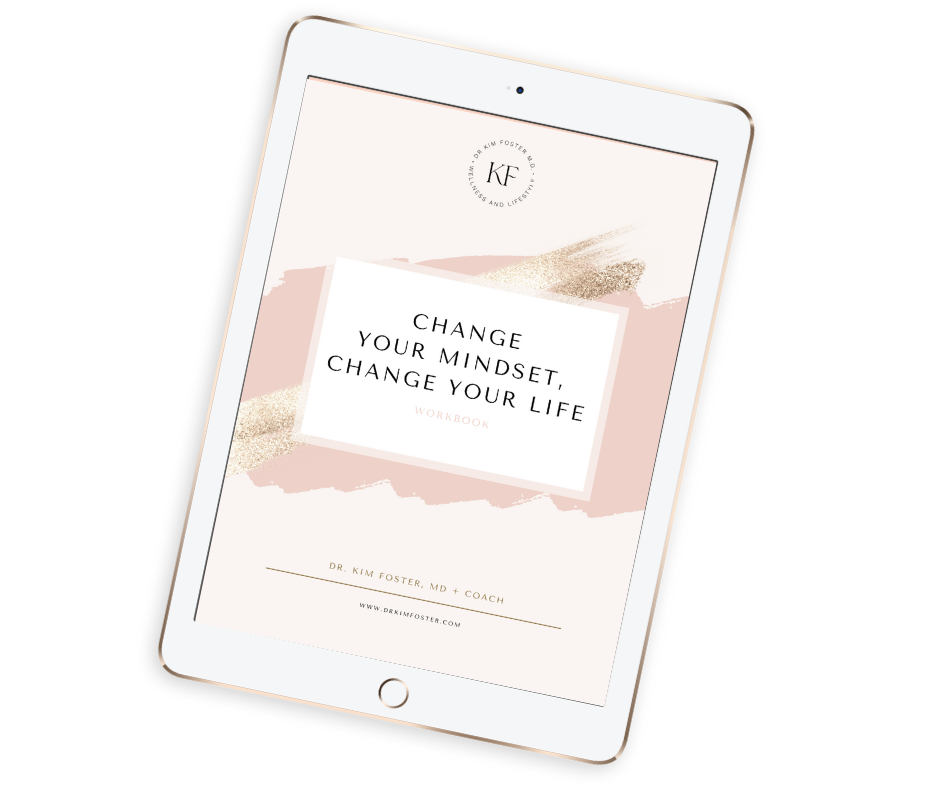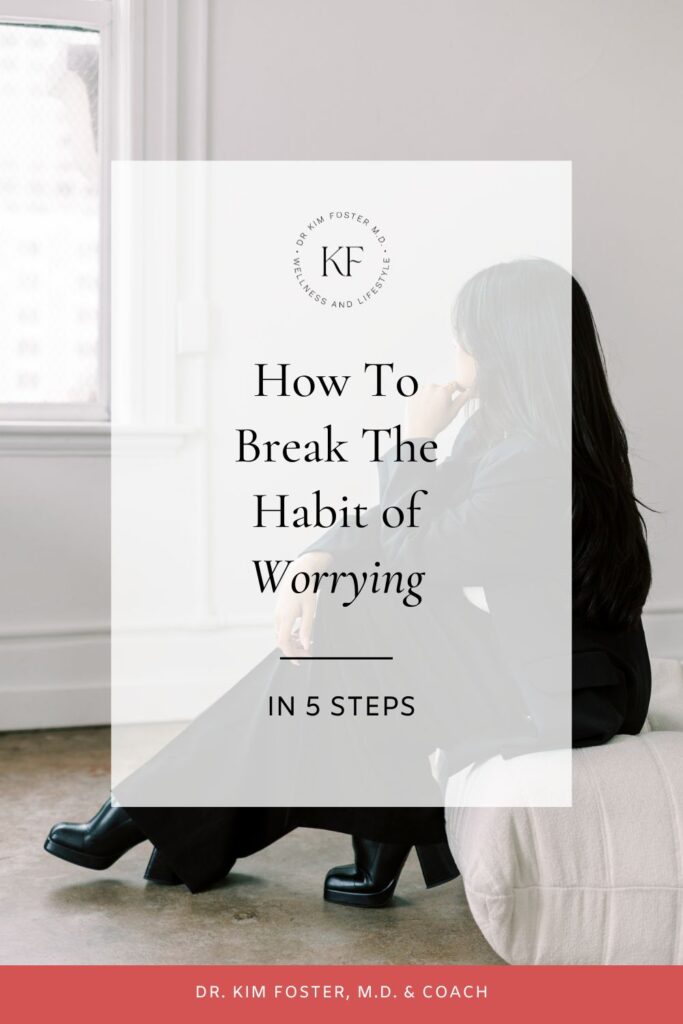Imagine a life where worry doesn’t have a seat at the table—where your thoughts aren’t constantly hijacked by worst-case scenarios or endless ‘what ifs.’
What would you do with all the energy you gain from no longer agonizing over things that may never happen?
Would you dive into the projects you’ve been putting off? Strengthen your relationships? Or chase your big dreams without second-guessing every step?
Worry is a thief of joy and peace. It disconnects us from the present moment and tricks us into believing it’s protecting us.
But what if you could break the cycle?
In this week’s article and YouTube video, I’m showing you how to free yourself from the habit of worrying in five simple steps.
It’s time to reclaim your energy, focus, and control!
1. Set a “Worry Time”
This was an absolute game-changer for me, so I want to share this tip right off the bat.
Worrying is something we ALL do, and it’s not something we can completely switch off. Trying to never worry will only leave you feeling like a failure, further hindering your confidence and inner peace.
So don’t try to stop worrying. Instead, set a designated time for it. By doing so, you take back the steering wheel and gain control over your worrying – You’re allowing it, but only at set times.
This strategy can help you become more present when spending time with your loved ones, and it can help you relax more during your downtime.
Now, I know what you’re thinking: “Worries pop into my head all the time; how do I prevent them from coming up outside of worry time?”
Here’s how…
When you feel a worry arise, write it down and tell yourself, ‘I’ll deal with it during my Worry Time.’
Then, when that time comes, set a timer and focus only on the worries you’ve written down.
Interestingly, by the time you get to your scheduled worry time, you’ll notice many of those concerns feel less important or even irrelevant.
2. Challenge Your Worries
The second strategy is to challenge your worries.
We tend to let our concerns dominate our minds, believing them immediately. We rarely pause to ask ourselves if our fears are grounded in reality or just assumptions running wild.
In many cases, it is the latter, so I highly recommend you start challenging your worries.
The next time you find yourself stuck in the cycle of worrying, stop and ask yourself, “Is this a fact or just an assumption?”
Write down your concern, then challenge it with rational, evidence-based thoughts.
Here’s an example: If you’re afraid your new business or project might fail, remind yourself of all your past achievements.
Or, if you’re stressing over a presentation, look for any facts to back up that worry. Chances are you have prepared thoroughly and done everything in your power to succeed, meaning there is no evidence to suggest your presentation will be a disaster
Challenging your worries this way allows you to take back the power as you see things as they really are, not as your mind imagines them.
3. Focus on What You Can Control
The third strategy is identifying how many of your worries are out of your control and how many you can do something about.
This is crucial as we often worry about “what-if” scenarios we have no control over, such as a loved one getting sick or a mistake we made in the past.
These types of worries leave us feeling powerless and consume a huge amount of our energy for no reason, as we cannot do anything about them.
However, you can take back control by asking yourself, ‘What can I control here?’ or ‘What can I do about this right now?’
If the answer is nothing, let go of the worry and focus on something else that you can control.
If you find there is something you can do about your concern, take action, even if it’s something small.
For example, if a loved one gets sick, one thing you CAN do is start researching solutions.
By focusing on what’s within your power, you regain a sense of control, which will reduce your anxiety and overwhelm.
4. Break the Worry Spiral with Mindfulness
Worrying disconnects us from the present moment and keeps us stuck in a cycle where one anxious thought rolls into another.
Therefore, mindfulness is one of the best ways to alleviate worry, as it helps us cultivate calm and presence and pull us out of that mental spiral.
While there are many types of mindful practices that can help, one of the simplest ones is to bring your attention to whatever task you’re doing by focusing on your senses.
You can do this with practically any everyday activity, such as brushing your tea, showering, or making a cup of tea.
I’ve turned my morning tea into a mindful ritual.
I smell the tea as I open the canister and listen to the kettle gradually getting louder as it boils. As I pour the tea, I notice the water changing color as it hits the bag. Then, as I take my first sip, I focus on the taste.
It might seem simple, but fully focusing on something as ordinary as making tea can ground you in the present and calm your mind. It’s a powerful way to break the cycle of worry.
So try this whenever you feel your mind spiraling and notice the instant calming sensation.
5. Create a “Worry-Free” Ritual
I used to lay awake at night, replaying everything I didn’t finish or stressing about the day ahead.
After far too many sleepless nights, I decided to develop a simple nighttime routine, which I called a “Worry-Free Ritual.”
Here’s how it works…
When I go to bed, I write down all my current worries. This alone feels like emptying the thoughts from my head and onto the page.
I then say to myself, “I’m letting these go for tonight.” To reinforce this, I often follow it up with something calming—like a brief meditation.
You can do the same—set aside a quiet moment and write down your worries. As you do, make a conscious effort to release them.
Create a mantra for yourself, such as, “I’ve done all I can today, and tomorrow is a fresh start.”
This intentional release can be a small but transformative step toward a more peaceful mind.
Final Thoughts
In this week’s YouTube video, I dive deeper into these 5 steps and share an additional strategy – Using positive focus to rewire your brain!
Trust me, this extra tip is a HUGE mindset shift you won’t want to miss out on.
Here’s where you can watch the full episode:
And before you go, take a moment to reflect: What do you need to feel your best?
I’d love to hear about your self-care journey—how do you make yourself a priority? Share your thoughts in the comments below!
Download my FREE Change Your Mindset, Change Your Life Workbook!


FREE CLASS!
Looking to take your wellness journey to the next level?
The 3 Secrets For Stepping Into A Meaningful New Career Without Wasting Time Or Money
- find out why health & wellness coaching is a skyrocketing industry that can provide the freedom and fulfillment you’ve been craving
- discover the 3 biggest myths about health & wellness coaching that will hold you back (and what the truth is instead)
- learn the secret sauce for getting amazing results for your clients (and building a profitable business as a wellness coach)
…and more!







